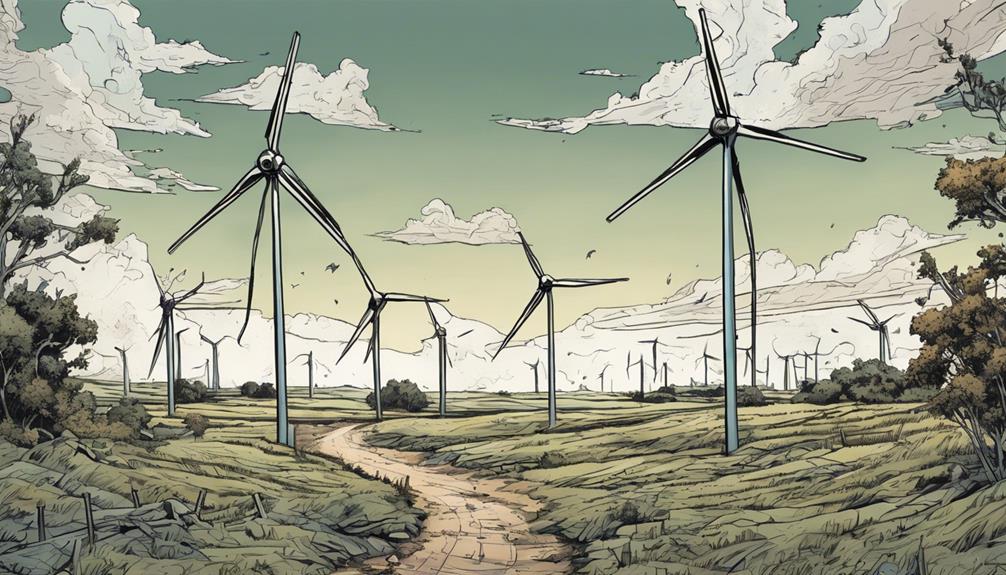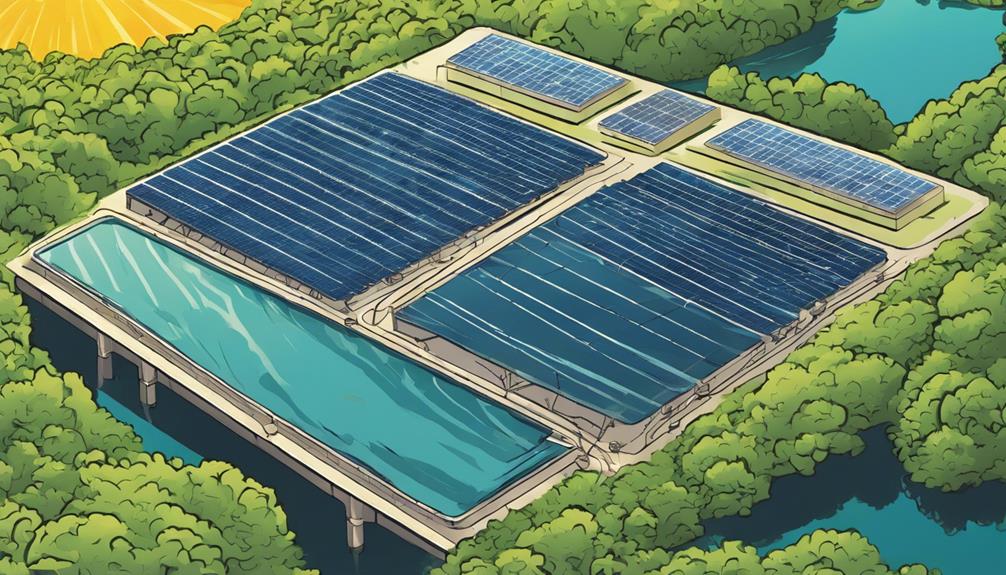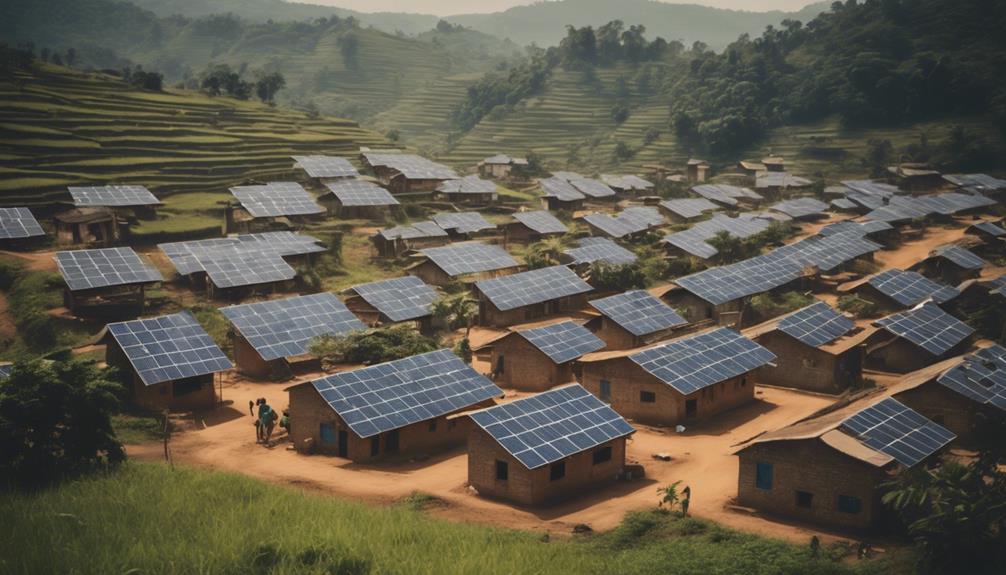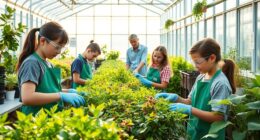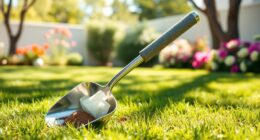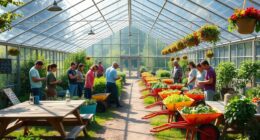When it comes to wind turbine longevity, I've found that several factors come into play. Regular maintenance practices, like routine inspections and repairs, can extend a turbine's lifespan. Technological advancements, such as advanced materials and control systems, also enhance performance and reduce wear and tear. Environmental conditions, like extreme temperatures and humidity, can have a negative impact, while design and operation considerations, like aerodynamics and yaw control, can increase lifespan. And let's not forget the importance of timely repairs – delaying them can lead to costly fixes. As I explore these factors further, it becomes clear that a combination of these elements is key to maximizing a wind turbine's lifespan.
Key Takeaways
- Regular maintenance practices, including inspections and repairs, extend a wind turbine's lifespan by minimizing wear and tear.
- Advanced materials, designs, and control systems enhance turbine longevity by reducing fatigue, stress, and corrosion.
- Environmental conditions, including extreme temperatures, humidity, and wind speeds, can accelerate wear and tear, leading to premature failure.
- Design and operation considerations, such as rotor blade aerodynamics and gearbox optimization, impact turbine longevity by reducing fatigue loads and wear.
- Timely repairs are crucial to minimizing downtime, preventing further damage, and extending the overall lifespan of wind turbines.
Maintenance Practices Matter

Regular maintenance practices are the backbone of extending a wind turbine's lifespan. I've seen firsthand how neglecting these essential tasks can lead to premature wear and tear. I've witnessed turbines that were once thriving but are now struggling due to poor maintenance.
On the other hand, turbines that receive regular check-ups and repairs continue to operate efficiently. It's clear that maintenance practices greatly impact longevity. By staying on top of routine inspections, lubrication, and repairs, we can prevent minor issues from becoming major problems.
This proactive approach not only extends the turbine's lifespan but also optimizes its performance, reducing downtime and costs.
Technological Advancements Enhance

As I explore the world of wind turbines, I'm struck by how technological advancements in materials and design have greatly enhanced their durability and lifespan. These innovations have led to significant improvements in turbine performance, reducing wear and tear, and increasing overall efficiency.
| Technological Advancements | Impact on Lifespan |
|---|---|
| Advanced materials | Increased resistance to fatigue and corrosion |
| Improved blade design | Reduced stress and vibration |
| Enhanced control systems | Early detection of potential issues |
| Advanced coatings | Protection from environmental elements |
| Smart sensors | Real-time monitoring and optimization |
These advancements have not only extended the lifespan of wind turbines but also reduced maintenance costs and downtime. As technology continues to evolve, we can expect even more impressive gains in wind turbine longevity.
Environmental Conditions Impact
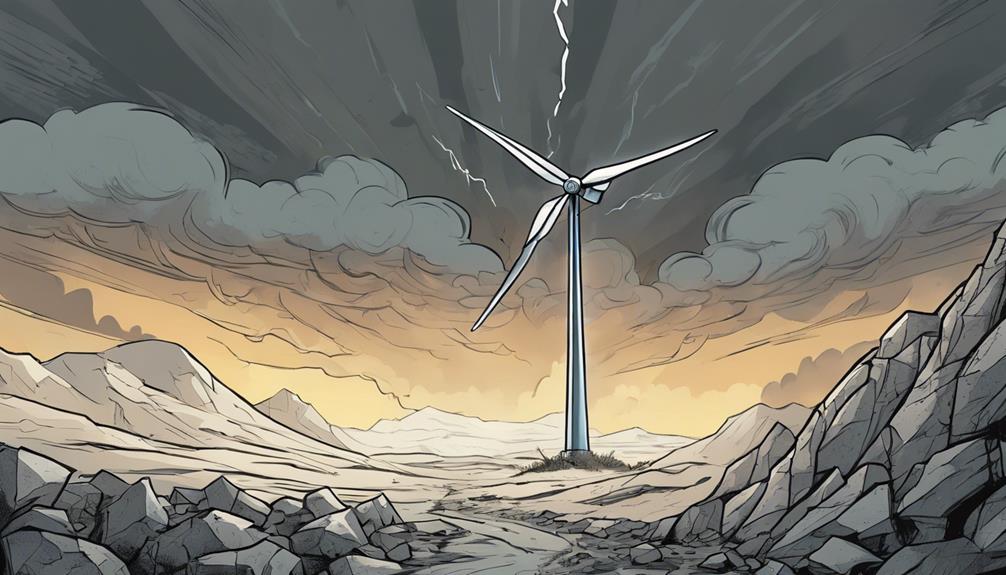
Environmental factors greatly impact the lifespan of wind turbines. Extreme temperatures, humidity, and wind speeds accelerate wear and tear on critical components. Turbines operating in harsh environments like deserts or coastal areas are more prone to premature failure. Common issues such as corrosion, erosion, and fatigue arise from exposure to saltwater, sand, or extreme winds. Temperature fluctuations can cause thermal stress, leading to component failure. It's crucial to consider these factors when designing and operating wind turbines. Mitigating the negative effects can extend the lifespan of these critical renewable energy systems.
Design and Operation Considerations
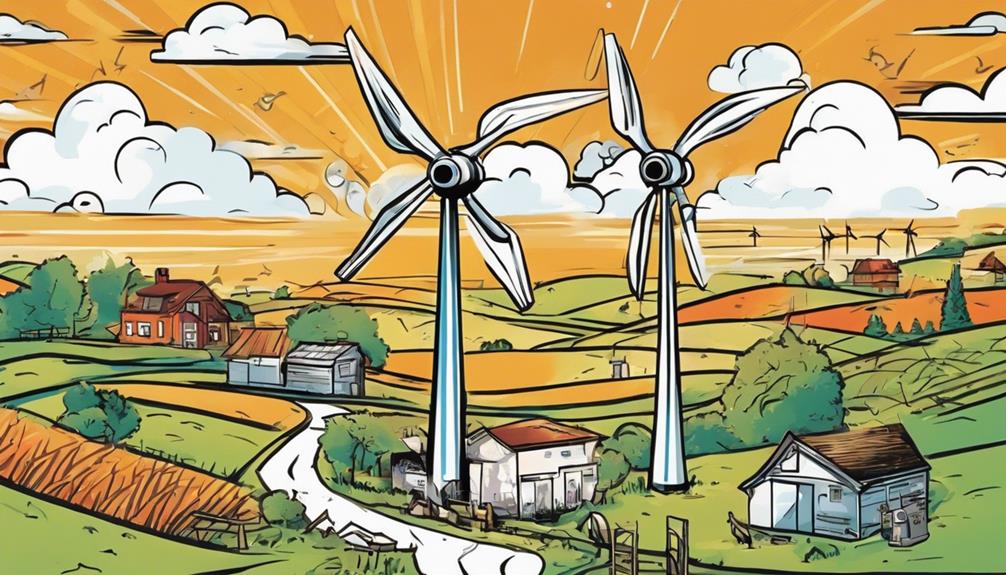
When designing and operating wind turbines, I consider factors like rotor blade aerodynamics, gearbox optimization, and yaw control to maximize efficiency and minimize wear and tear on critical components. These design and operation considerations play an essential role in extending the lifespan of wind turbines. By optimizing these factors, I can reduce the risk of premature failure and guarantee that the turbine operates within its design specifications.
| Design Consideration | Impact on Lifespan |
|---|---|
| Rotor Blade Aerodynamics | Reduces fatigue loads, increasing lifespan by 5-10% |
| Gearbox Optimization | Minimizes wear on gears, extending lifespan by 2-5 years |
| Yaw Control | Reduces stress on blades, increasing lifespan by 3-7% |
Timely Repairs Are Crucial
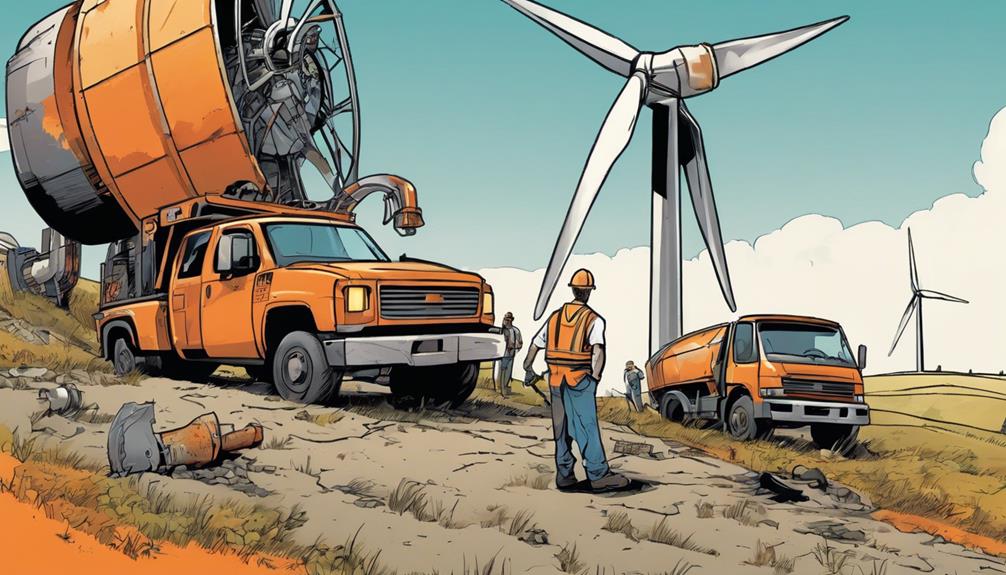
I make sure that timely repairs are a top priority, as neglecting to address issues promptly can lead to further damage and downtime. When issues arise, I act quickly to minimize the impact on turbine performance and lifespan.
Delaying repairs can cause small problems to escalate into costly and time-consuming fixes.
Here are some key benefits of timely repairs:
- Reduced downtime: Quick repairs get turbines back online faster, minimizing lost revenue and energy production.
- Prevented further damage: Addressing issues promptly prevents them from causing additional damage to other components.
- Cost savings: Timely repairs reduce the need for costly replacements and repairs down the line.
- Extended lifespan: By addressing issues quickly, I can help extend the overall lifespan of the turbine.
Frequently Asked Questions
What Role Do Bearings Play in Wind Turbine Longevity?
As I explore the world of wind turbines, I realize that bearings play an important role in longevity, as they're responsible for reducing friction and supporting heavy loads, making regular lubrication and inspection essential for their extended lifespan.
Can Turbines Be Refurbished or Repurposed at End-Of-Life?
As I dust off old turbines, I find they can be refurbished or repurposed at end-of-life, giving them a second wind, much like a vintage car restored to its former glory.
How Does Icing Impact Wind Turbine Performance and Lifespan?
I've seen how icing can severely impact wind turbine performance, reducing efficiency by up to 50% and increasing wear on blades and bearings, ultimately shortening the turbine's lifespan if not properly addressed.
What Are the Benefits of Using Advanced Materials in Turbines?
"As I gaze up at a wind turbine's sleek blades, I realize advanced materials mean enhanced durability, reducing wear and tear. This translates to a longer lifespan, increased efficiency, and lower maintenance costs – a win-win for turbine operators and the environment!"
Can Wind Turbines Be Designed for Extreme Weather Conditions?
Yeah, I think wind turbines can be designed for extreme weather conditions. Advanced materials and clever engineering can help them withstand harsh environments, like hurricanes or freezing temps, ensuring they keep spinning efficiently.
How Does Wind Turbine Propeller Length Affect its Longevity?
The impact of turbine propeller length on its longevity is significant. Longer propeller blades tend to produce more energy, but they also experience increased stress and fatigue over time. This can lead to a decrease in the turbine’s overall lifespan. Therefore, it’s important to carefully consider the balance between energy production and longevity when designing wind turbines.
Can the Longevity of Wind Turbines Affect the Number of Households They Can Power?
The longevity of wind turbine power households. The lifespan of wind turbines can significantly impact the number of households they can power over time. Regular maintenance and monitoring are crucial in maximizing their operational years and efficiency. A longer lifespan means more consistent and sustainable energy production for a greater number of households.
Conclusion
As I reflect on the intricacies of wind turbine longevity, it's clear that a multifaceted approach is essential.
Regular maintenance, technological innovations, and a deep understanding of environmental and design factors all play a pivotal role.
By grasping these interconnected threads, we can weave a tapestry of efficiency, ensuring these mighty machines continue to harness the wind's power for generations to come.
